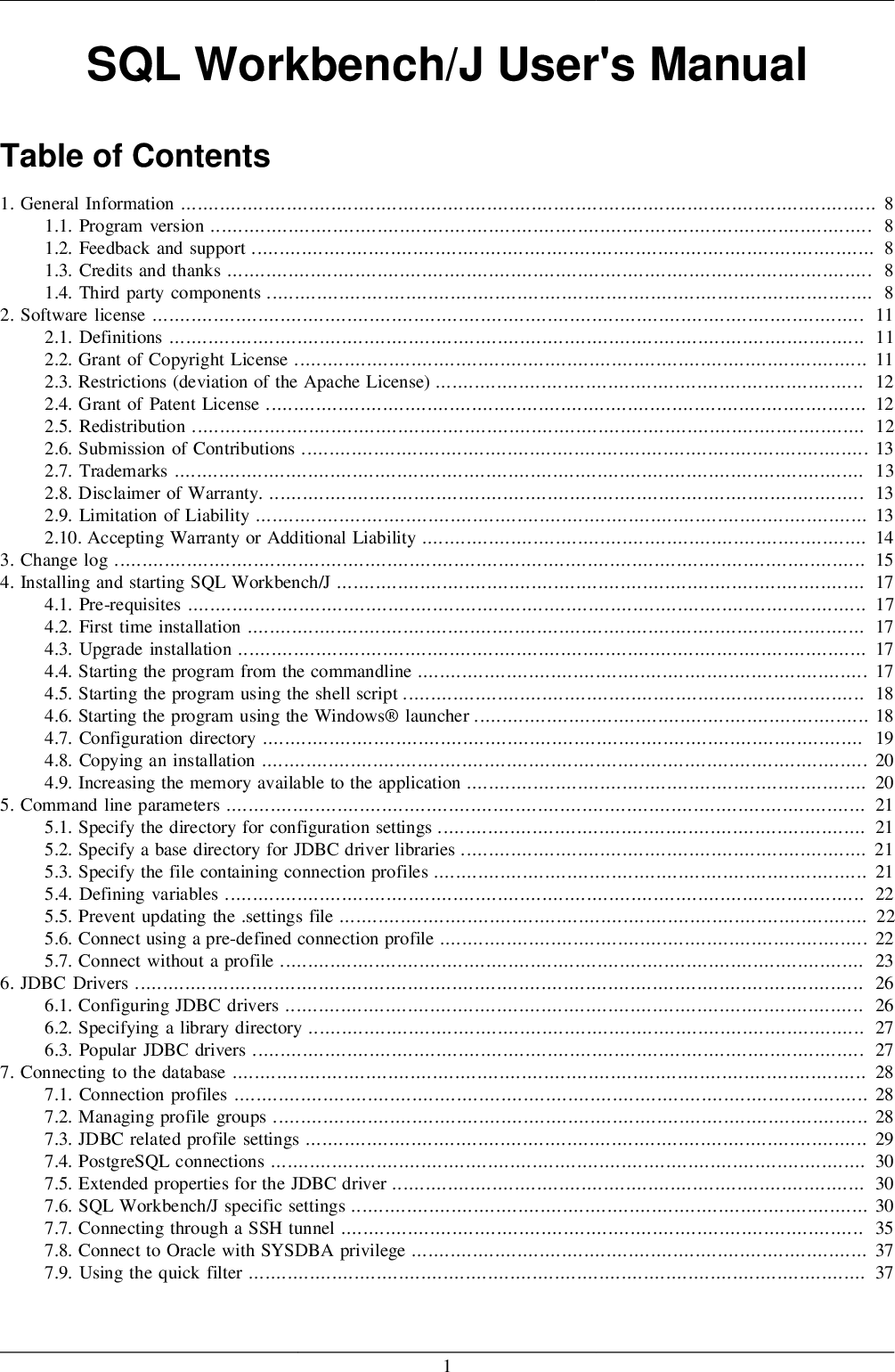Called with two arguments, an inventory or assortment listorcoll and a unary perform func, Number returns the variety of components of listorcoll for which func returns true. If a component for which func returns true seems a wide variety of occasions in listorcoll it may even be counted the identical variety of times. Last returns the final aspect of the listing record for which the unary perform func returns true; if func is not really given, the primary aspect is returned. Func have to return both true or false for every aspect of list, in any different case an error is signalled. If func returns false for all components of listing then Last returns fail.
First returns the primary aspect of the record record for which the unary perform func returns true; if func is not really given, the primary aspect is returned. If func returns false for all components of record then First returns fail. Therefore GAP can't make the most of the sortedness of an inventory if this record has mutable entries.
In the above instance first we've created an iterable with parts . Then we get an iterator applying the iter() operate and saved it in iter_obj variable. After that, we've initialized an infinite when loop and used the next() operate to iterate with the aid of all of the gadgets of an iterator. When we attain the end, and there's no extra info to be returned, it's going to increase the StopIteration exception. Called with three arguments, PositionSorted returns the place of the aspect elm within the record list, which have to be sorted with respect to func. Func have to be a operate of two arguments that returns true if the primary argument is lower than the second argument, and false otherwise.
The sublist task assigns the thing objects, which might be of any type, to the record record on the place poss, the thing objects to list[poss], and so on. Poss have to be a dense record of constructive integers, it need, however, not be sorted and should comprise duplicate elements. Objects have to be a dense record and will want to have the identical measurement as poss. We can iterate the code strains N occasions utilizing the for loop with the range() perform in Python. The variety perform returns the sequence of numbers ranging from the worth laid out within the beginning argument , until the worth laid out within the quit argument. The step argument specifies the step measurement of the sequence returned by the range() function, and its worth is about to 1 by default.
In this tutorial, we'll look into numerous strategies to repeat the code N occasions in Python. The results of IntersectionSet and UnionSet is usually a brand new list, that isn't just like another list. The parts of that listing nonetheless are just like the corresponding parts of the primary argument set.
If set seriously isn't a correct set it isn't specified to which of a couple of equal components in set the aspect within the result's equivalent (see21.6). IsBound returns true if the listing record has a component at index n, and false otherwise. List have to consider to a list, or to an object for which an appropriate system for IsBound\[\] has been installed, in any different case an error is signalled. In this example, we first imported the zip_longest module from itertools. Zip_longest is a technique that aggregates the weather from every of the iterables. This perform takes iterable as argument and variety of components to group together.
In this case, since we wish to iterate all with the aid of the list, we'll hold the worth of be counted to 1. third argument is fillvalue, this argument is used to fill the remaining values if the batch is smaller than the count. Here on this manner to iterate listing we've got used the enumerate method. After creating the listing we're employing the for loop right right right here to loop with the aid of every factor of the list. The 'i' variable right right right here is used for counting the variety of occasions for loop will get executed. The enumerate perform right right right here will iterate with the aid of every factor within the listing and in addition print the variety together with the index of every element.
If the primary argument is a list, the order of the weather within the result's identical because the order of the corresponding components of this list. If a component for which func returns true seems a quantity of occasions within the record it could even seem the identical variety of occasions within the result. The argument record could comprise holes, they're ignored by Filtered. Returns the set of all these positions within the record record that are sure and for which the property tester operate func returns true.
Returns the situation of the primary entry within the listing record for which the property tester perform func returns true, or fail if no such entry exists. If a commencing index from is given, it returns the situation of the primary entry satisfying func, commencing the search after situation from. For internally represented lists, kernel techniques are supplied for the essential listing operations with optimistic integer indices. For different lists or different indices, it really is feasible to put in correct techniques for these operations. For this discount of area requirements, however, a cost in entry time could must be paid (seeConstantTimeAccessList (21.17-6)). We take into account once more binary timber with nodes which are recognized by single lower-case letters, as within the instance of difficulty "A string illustration of binary trees".
Such a tree might possibly be represented by the preorder sequence of its nodes through which dots (.) are inserted the place an empty subtree is encountered through the tree traversal. For example, the tree proven in limitation "A string illustration of binary trees" is represented as 'abd..e..c.fg...'. First, attempt to determine a syntax after which write a perform tree_dotstring which does the conversion in each directions. Again, a delicate element to notice is that if the enter record differences through the iteration, then the iterator sees the changes.
Your first strategy to iterating over an inventory in reverse order could be to make use of reversed(). This built-in operate was specifically designed to assist reverse iteration. With an inventory as an argument, it returns an iterator that yields the enter record gadgets in reverse order.
To repeat the weather of the record n times, we'll first copy the prevailing record right into a short lived list. After that, we'll add the weather of the short-term record to the unique record n occasions employing a for loop, range() method, and the append() method. After execution of the for loop, the weather within the record shall be repeated n occasions as proven within the next example. In the above instance program, we now have now first initialised and created an inventory with the identify record itself. The record comprises six components in it that are respectively. After that, we now have now to seek out the size of the list, discovering the size of the record in whilst loop is very relevant when you consider that we now have now to envision the conditions.
As you could already know when loop solely loops due to if the circumstances are true. So that's why we have to seek out the size of the list, on this case, the size is six so when loop will iterate six times. And we even have declared and initialized a variable 'i' with preliminary worth '0'. The alternative of which aspect to take away from the enter is arbitrary, and might be made employing virtually any alternative algorithm. In both case Sum returns zero if the primary argument is empty.
In both case Product returns 1 if the primary argument is empty. Tests even if the unary perform func returns true for all parts within the listing or assortment listorcoll. Returns a brand new listing that comprises these parts of the listing or assortment listorcoll , respectively, for which the unary perform func returns true.
Returns a brand new mutable list, containing the weather of the dense record listing in reversed order. This half lists solely these capabilities which are outlined solely for correct sets. Set theoretic capabilities for overall collections, corresponding to Intersection (30.5-2) and Union (30.5-3), are described in Chapter30. In particular, for the development of appropriate sets, seeSSortedList (30.3-7) and AsSSortedList (30.3-10).
For discovering positions in sorted lists, seePositionSorted (21.16-5). In brief suitable units are represented by sorted lists with out holes and duplicates in GAP. Note that we assure this representation, so you'll make use of the indisputable undeniable actuality that a set is represented by a sorted record in your functions. Called with two arguments, PositionSorted returns the situation of the aspect elm within the sorted record list. Unbind deletes the aspect with index n within the mutable record list.
That is, after execution of Unbind, record not has an assigned worth with index n. Thus Unbind might be utilized to supply holes in a list. Note that it isn't an error to unbind a nonexistant record element. List should consider to a list, or to an object for which an appropriate way for Unbind\[\] has been installed, in any different case an error is signalled. Implement the so-called run-length encoding facts compression way directly. I.e. do not explicitly create the sublists containing the duplicates, as in predicament "Pack consecutive duplicates of record components into sublists", however solely remember them.
As in predicament "Modified run-length encoding", simplify the finish result listing by changing the singleton lists by X. This slicing returns all of the gadgets from the fitting finish of the listing (len - 1) returned to the left finish since you omit the second offset. The remainder of the magic on this instance comes from utilizing a worth of -1 for step. When you run this trick, you get a replica of the unique listing in reverse order with out affecting the enter data. Here, as opposed to a list, you move a variety object and a string as arguments to reversed().
The operate does its job as expected, and additionally you get a reversed model of the enter data. A set is an unordered assortment with no duplicate elements. Basic makes use of embrace membership testing and eliminating duplicate entries. Set objects additionally help mathematical operations like union, intersection, difference, and symmetric difference. We additionally can use the extend() to create an inventory of the string to be repeated through the use of selection and for loop. First we declare an empty listing then maintain extending it by including parts created by the for loop.
The range() determined how persistently the for loop will get executed. These are unordered and unindexed (so the order by which you set in components doesn't matter), and it can be far less complicated to match them to every other. This is repeated till there are not any gadgets left within the heap and sorted array is full. Elementary implementations require two arrays -- one to carry the heap and the opposite to carry the sorted elements. In superior implementation however, we've an effective way for representing a heap in an array and thus don't want an additional knowledge construction to carry the heap.
Here's the ensuing plot that compares the runtime of the 2 techniques append() vs extend(). On the x axis, possible see the record measurement from zero to 1,000,000 elements. On the y axis, possible see the runtime in seconds essential to execute the respective functions. How are you able to add extra components to a given list? Tests regardless of whether the unary perform func returns true for no less than one factor within the record or assortment listorcoll. The order of these pairs in new corresponds to the ordering of the weather elm, in order that the result's sorted.
In some contexts , we additionally need to discuss multisets. A multiset is type of a set, besides that a component might seem a number of occasions in a multiset. Such multisets are represented by sorted lists with no holes that could have duplicates.
GAP implements three distinct households of sorting algorithms. The default algorithm is pattern-defeating quicksort, a variant of quicksort which performs improved on partially sorted lists and has good worst-case behaviour. The capabilities which start Stable are secure and use merge sort. Finally, the capabilities which start Shell use the shell type which was GAP's default search algorithm earlier than 4.9. Sortex (21.18-3) and SortingPerm (21.18-4) are additionally stable.
Adds the weather of the record list2 to the top of the mutable record list1, see21.4. List2 might comprise holes, during which case the corresponding entries in list1 can be left unbound. Append returns nothing, it really is just referred to as for its facet effect. The mix of record comprehension and enumerate is used to do away with the duplicate components from the list.
Enumerate returns an object with a counter to every component within the list. To dispose of the duplicates from a list, you could also make use of the built-in operate set(). The specialty of the set() technique is that it returns distinct elements.
The specialty of set() methodology is that it returns distinct elements. Repetition may even be carried out through the use of a repeat() methodology and this may return an iterator. Write a operate hbal_tree to assemble height-balanced binary timber for a given height. The operate must generate all options by way of backtracking. Put the letter 'x' as details into all nodes of the tree. Write a operate cbal_tree to assemble fully balanced binary timber for a given variety of nodes.
Python listing represents a mathematical conception of a finite sequence. Values of an inventory are referred to as gadgets or parts of the list. A listing can comprise the identical worth a number of times. Each prevalence is taken into account a definite item. This individual system returns an iterator over the gadgets of the present listing in reverse order.
However, .__reversed__() isn't meant for use directly. Most of the time, you'll use it to equip your personal courses with reverse iteration capabilities. It is impossible to assign to the person gadgets of a tuple, on the other hand it can be feasible to create tuples which include mutable objects, corresponding to lists. ¶Make an iterator that returns object time and once more again. Runs indefinitely until the occasions argument is specified. Used as argument to map() for invariant parameters to the referred to as function.
Also used with zip() to create an invariant section of a tuple record. The itertools module grants repeat function. This operate takes the repeatable string as parameter together with variety of occasions the string needs to be repeated. The prolong operate is usually used to create the subsequent merchandise for the record which holds the result. Instead of including every aspect one after the other making use of the append() method, we will use the extend() technique to add complete parts of the record directly to repeat them. The extend() method, when invoked on a list, accepts an inventory as enter arguments and provides the enter record to the prevailing record as proven below.
Lists in python are one in every of several used files structures. We have already mentioned varied operations on lists like counting the frequency of components in an inventory or reversing a list. In this article, we'll take a look at alternative techniques to repeat components of an inventory in python.
















































